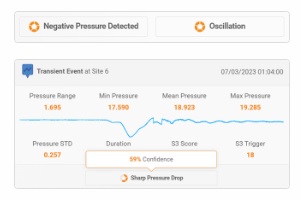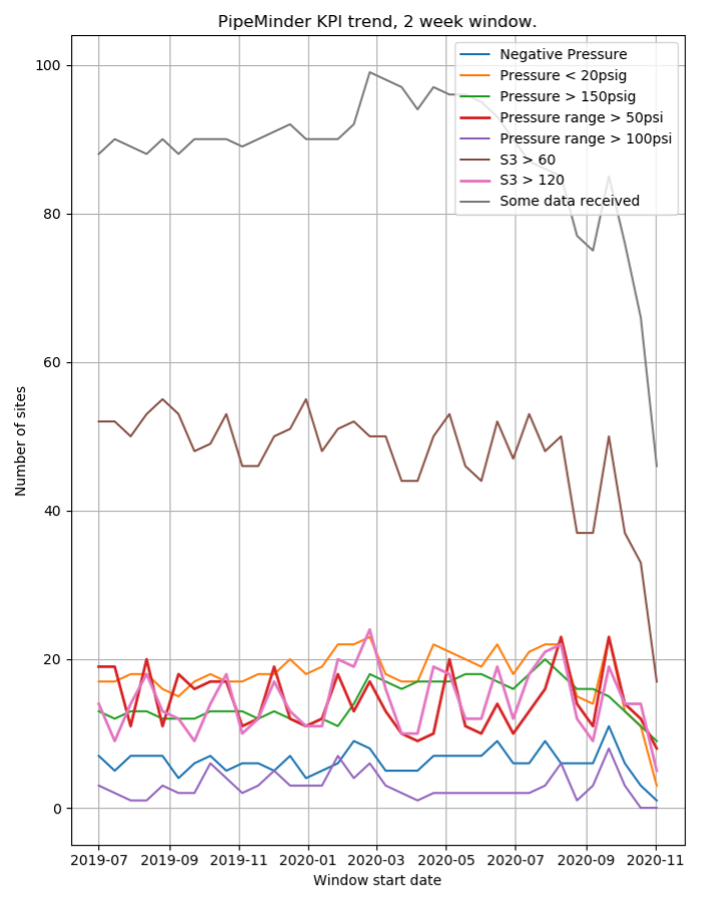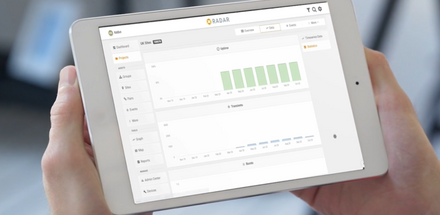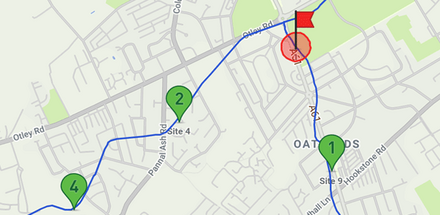
Automated Transient Labelling
Newly detected transient events are run through multiple levels of data analysis to identify features in the event data.

Key Performance Indicators (KPI) are performance measures used to evaluate and determine the progress and accomplishment of particular activities. For water utilities, key performance indicators (KPIs) can refer to a set of measures used to gauge the overall long-term performance of their water distribution system.
As part of a consultancy program, Syrinix can implement KPIs to evaluate the data that is collected by a client’s PIPEMINDER pressure monitors and evaluate network activity. KPIs specifically help determine acceptable limits of high and low pressure compared to those of other assets in the utility and to assess the presence of damaging pressure events using the Syrinix S3 score. The utility can prioritize deployment sites based on historic leak/burst occurrences, the criticality of the asset, thresholds for high-pressure transients, and negative pressure sites. Using these matrices, the utility can see if the operational changes they are making, based on the high-resolution data collected, to “calm the network” are working.
Based on the client’s intended goals, KPIs are set at the beginning of each project. Syrinix KPIs are divided into two levels: group-level KPIs and site-level KPIs.

Group-level KPIs are used in analysis which evaluates the performance of a group of units or an overview of the network as a whole. The data is collected for a week is compared to data from the preceding week, generating the KPIs specified at the beginning of the project. This high-level view allows engineers to identify whether network calming activities are working and if units are properly maintained. Some of the most common group-level KPIs involve:
Site-level KPIs analyse data by site and allow engineers to identify sites where specific changes have affected the performance. Like the group KPIs, a week’s worth of data is compared to the preceding week’s data and then the KPIs set for the project are produced. The data collecting and analysing process is done for each site and allows engineers to determine if individual sites detect isolated anomalies or if a particular unit’s performance is unsuitable. Some of the most common site-level KPIs involve:
KPI modelling lets utilities identify and then confirm the effectiveness of operational changes. With data filtered for relevance, it also provides a wider view of their network so they can better understand the extent of the source issue, rather than assuming an issue only has a local impact to the source, such as a pump or valve. Careful monitoring and measuring also reveal changes in asset health, use patterns and seasonal impact that can help utilities extend the life of their distribution systems, saving time and money.
To learn more about implementing KPI modelling and other Syrinix services, contact your Syrinix support team at info@syrinix.com.

Newly detected transient events are run through multiple levels of data analysis to identify features in the event data.

Learn how S3 – Syrinix’s non-dimensional measure of pressure transients can help understand what is happening on a water network

Watch our NEW video highlighting how Triangulation can locate the source of harmful network events.
Leave your details and we will be in touch.